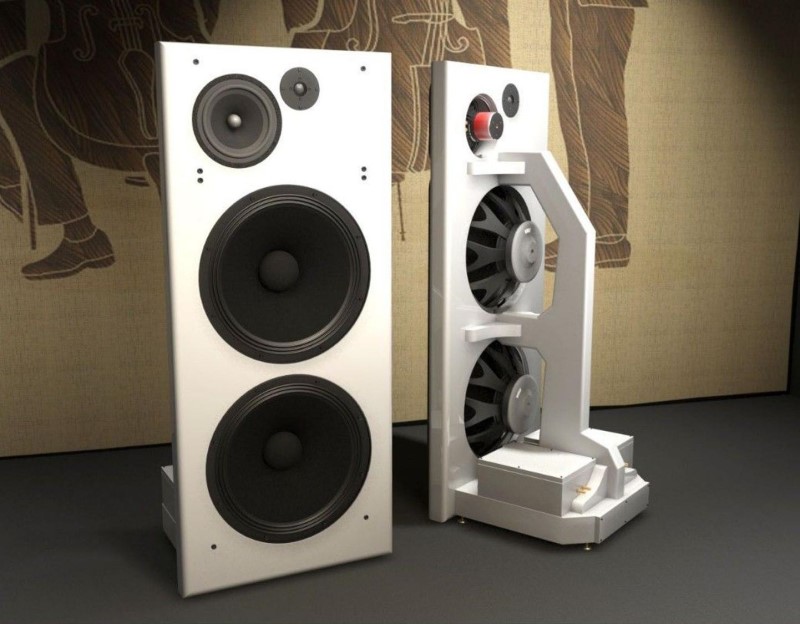What Does it Mean that Subwoofers are Omnidirectional
We get questions about subwoofers all the time. Where they should be placed, if they should be angled, how many you should have, and more. Generally speaking, all the confusion stems from the fact that subwoofers are not like other speakers. Subwoofers are omnidirectional. So, what does it mean that they are omnidirectional and how does that differ from normal speakers? Let’s discuss.
Speakers and Directionality
The directionality of a speaker has very little to do with its design (generally), and everything to do with the frequencies it is reproducing. The shorter the frequency, the more directional the sound. You can test this by downloading and playing some test tones through your speakers (download from AudioCheck.net). Try a 10,000Hz tone. It will be very high but you should be able to hear it.
Once you’ve got the tone playing, move to the side of your speaker. You’ll notice that the timbre and volume of the tone will significantly change as you move off to the side of your speaker. If the driver was freestanding (mounted onto a sheet of wood with no cabinet behind it), you’d be able to move to the back of the driver and the timbre and volume would be similar to what you noticed from the front. This is because the waves are very short (1.356 inches at 10kHz).

If you try the same trick with a lower sound (say 30Hz), you’d have a completely different experience. The sound would not change as you moved around the speaker. Now, this would be true if you did this test in an open field. If you try it in your room with your speaker (or subwoofer in this case), you would probably notice timbre and volume changes. That’s because of how the bass waves are interacting with the room. This is because the waves are so long (37.7 feet at 30Hz) that they wrap completely around the cabinet. This is why we say that subwoofers are omnidirectional.
It isn’t the Subwoofer that is Omnidirectional
Does this mean that only subwoofers are omnidirectional? Of course not. It isn’t the subwoofer, it is the sound that they create. Subwoofers only recreate the lowest sounds. All of those sounds are omnidirectional because of the length of the soundwaves. But your regular speaker is also omnidirectional…at times.
The normal crossover that people use is 80Hz. This is the frequency where the speakers stop playing and the subwoofer starts (it’s more complicated than that, but, for this discussion, it is close enough). At 90Hz the sound waves are 15.5 feet long. These sounds are also omnidirectional and they are mostly being played by your speakers. We don’t talk about the omnidirectionality of speakers because we are more worried about those highly directional higher frequencies.
The Problem of Localization
You may be wondering why we don’t have our subwoofers creating all the omnidirectional sounds. If we really only care about the highly directional sounds coming from the speakers, then the subs could do all the omnidirectional sounds, right? Well, the problem is how we hear.
At around 80Hz, sounds are much harder for our brains to localize. Part of the problem is the length of the sound waves. The sound is bouncing around the room many times before we can even hear it (that 30Hz wave we played earlier will bounce off of every wall in your room (most likely) before it completes a full oscillation). It is coming at you from all sides with pretty much the same volume. Your brain can’t tell where it is coming from.
Above 80Hz, this phenomenon is reduced. The 90Hz wave is only 15.5 feet long. 120Hz is 9.4 feet. These waves are not coming at you from all directions evenly. Depending on the size of your room, one ear may be getting the sound at a slightly different volume than the other. This helps us localize the origin of the sound. In your room, you may not be able to localize 100Hz. In another room, it may be possible. While these sound waves are still long enough that they wrap completely around the subwoofer and are considered omnidirectional, they are not so long that we can’t localize them. Therefore, we want the localizable sounds to come from the speakers, and not the subwoofers
Conclusion
Sound is something most of us experience every day but rarely think about. When we are told that we need a subwoofer for the lowest bass, it often doesn’t make sense as to why. Hopefully, this explanation has cleared up some of that confusion.


